In 2024, the software development landscape will constantly evolve with the latest technologies in software taking center stage. Startups, businesses, and companies must understand the significance of staying ahead in this dynamic field. The latest software technologies not only drive innovation but also hold the potential to transform industries. It is crucial to embrace these advancements to remain competitive and relevant in the IT industry.
Aloa, an expert in software outsourcing, brings expertise and experience to the software industry. With a deep understanding of software development trends, Aloa is well-equipped to guide businesses in harnessing the power of the latest technologies. Aloa's knowledge and insights are invaluable for startups and established companies in this ever-changing digital landscape.
In this blog, we will delve into the latest technologies in software for 2024. We will explore the key considerations when applying the latest software tech and how these innovations impact various industries. Afterward, you will comprehensively understand the latest software development trends and their relevance in today's digital world.
Let's dive in!
10 Must Watch Latest Technologies in Software for 2024
In 2024, the software development industry is poised to witness a remarkable transformation with cutting-edge innovations at its core. These latest technologies in software promise to reshape the landscape, offering businesses and developers new opportunities for growth and innovation and revolutionizing the way software applications are developed and utilized. Staying informed with such trends complimented with digital marketing strategies can help businesses align their efforts with modern advancements.
Let's explore the ten must-watch technologies defining the software development landscape in 2024.
1. Quantum Computing
Quantum Computing represents one of the most cutting-edge developments in the field of technology, marking a significant departure from traditional computing approaches. It draws upon the intricate principles of quantum mechanics to process information fundamentally distinctly from that of classical computers.
This groundbreaking advancement stands poised to transform various sectors, including finance, healthcare, and logistics. The remarkable computational prowess of quantum computing allows it to tackle complex challenges once deemed impossible, such as intricate optimization tasks and deciphering cryptographic codes. As quantum computing continues to advance and mature, it is set to revolutionize the software industry by providing unparalleled speeds and capabilities in data processing and analysis.
Key Considerations for Implementing Quantum Computing
When considering the adoption of Quantum Computing, there are crucial factors to keep in mind to ensure successful integration into your software ecosystem:
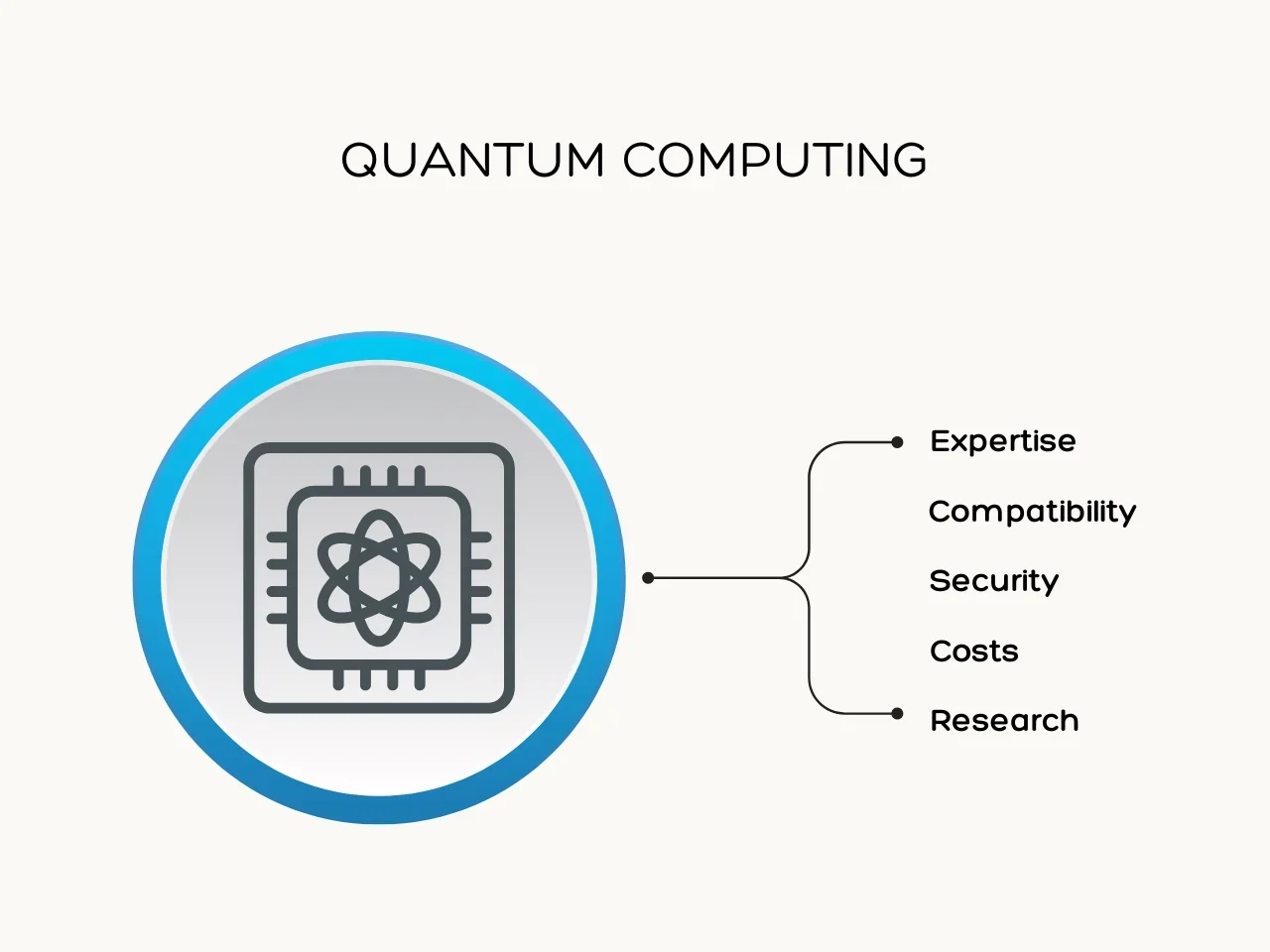
- Expertise: Employ or train teams with expertise in quantum programming languages and algorithms.
- Compatibility: Evaluate the compatibility of existing software with quantum technology.
- Security: Address quantum computers' unique security challenges and implement encryption strategies accordingly.
- Costs: Assess the cost-benefit analysis of quantum computing investments.
- Research: Stay updated on the latest quantum software and hardware developments to make informed decisions.
Embracing Quantum Computing requires careful planning and consideration. It holds immense potential for those willing to harness its power while being mindful of the associated challenges and opportunities.
2. DevOps and CI/CD
DevOps and continuous integration/deployment (CI/CD) represent pivotal trends in the latest software technologies. DevOps fosters collaboration between development and operations teams to streamline the software development lifecycle. It emphasizes automation, continuous integration, and delivery to enhance software quality and shorten release cycles. CI/CD, on the other hand, focuses on automating the testing and deployment processes, ensuring that code changes are rapidly and reliably delivered into production environments.
Key Considerations for Implementing DevOps and CI/CD
When adopting DevOps and CI/CD practices, businesses should consider the following factors for successful implementation:

- Cultural Shift: Promote a culture of collaboration, transparency, and accountability within the organization.
- Toolchain Selection: Choose the right DevOps tools and CI/CD pipelines that align with your development needs.
- Automation: To reduce manual errors, implement automation for testing, integration, and deployment processes.
- Monitoring and Feedback: Establish robust monitoring and feedback mechanisms to improve processes continuously.
- Security:Prioritize security by integrating security checks into CI/CD pipelines.
Embracing DevOps and CI/CD, along with other latest technologies in software like AdTech and MarTech, can significantly enhance software development efficiency and product quality. However, organizations must carefully plan and adapt their workflows to leverage these transformative practices fully. Successful DevOps implementation requires a holistic approach, combining the right tools, processes, and cultural changes to create a seamless, efficient development ecosystem that can respond quickly to market demands and user feedback.
3. Artificial Intelligence (AI) and Machine Learning (ML)
In recent years, Artificial Intelligence (AI) and Machine Learning (ML) have emerged as the latest technologies in software development, with many AI development tools revolutionizing the IT sector and shaping the job market. AI refers to creating computer systems that can perform tasks that typically require human intelligence, such as speech recognition, image recognition, and data processing. ML, on the other hand, focuses on the development of algorithms that enable machines to learn and make predictions based on data. These technologies have come a long way, transforming industries and offering lucrative opportunities for those seeking a successful career. For example, an AI paraphrase tool operating on ML algorithms will take content from the user and provide its improved version within seconds. Overall, both NLP and ML technologies have come a long way, transforming industries and offering lucrative opportunities for those seeking a successful career. Collaborating with an AI development company can accelerate the implementation of these cutting-edge technologies, allowing businesses to harness AI's full potential for innovation and growth.
Key Considerations for Implementing AI and ML
When implementing AI and ML in software development, several key considerations must be taken into account:

- Data Science Expertise: Skilled data scientists are crucial for successful AI and ML projects. They play a pivotal role in training algorithms and ensuring accurate predictions.
- User Interface Optimization: A seamless user interface is essential for AI and ML applications. A well-designed interface enhances the user experience.
- Ethical Concerns: Addressing ethical considerations is paramount, especially in AI, where biases can impact outcomes. Developers must ensure fairness and transparency in algorithms.
- Data Privacy: Protecting user data, mainly AI in FinTech, is a top priority. Compliance with data protection regulations is essential to maintain trust.
- Continuous Learning: AI and ML models require ongoing refinement and improvement. Regular updates and monitoring are necessary to stay relevant in the ever-evolving field of AI.
AI and ML are the latest technologies in software that have transformed the software development process. Software development companies must embrace these digital technologies and adapt to the latest technology trends to stay competitive. With the right approach and considerations, AI and ML can pave the way for innovative solutions and a promising future in the software industry.
4. Low-Code/No-Code Development
Low-Code/No-Code Development, among the latest technologies in software, is a game-changing approach to building applications. It empowers users, including non-developers, to create software solutions with minimal coding efforts. This innovation reshapes the software industry by accelerating application development, reducing costs, and increasing agility. With Low-Code/No-Code, businesses can quickly respond to changing market demands and rapidly prototype ideas. It democratizes software development, making it accessible to a broader audience.
Key Considerations for Implementing Low-Code/No-Code Development
When considering the adoption of Low-Code/No-Code Development, several essential factors come into play:
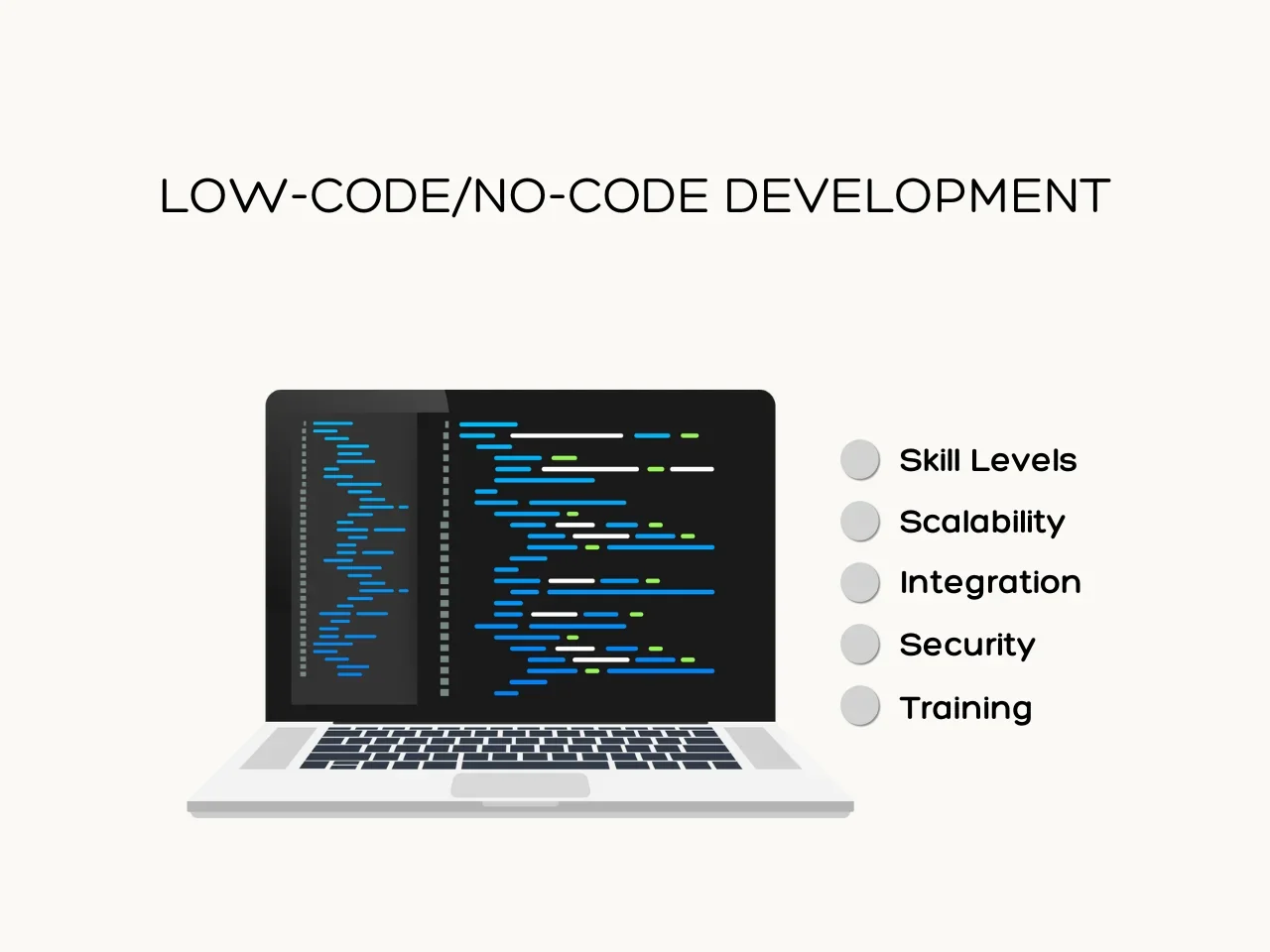
- Skill Levels: Assess the skills and capabilities of your team to determine the suitability of Low-Code/No-Code solutions.
- Scalability: Ensure the chosen platform can scale as your application requirements grow.
- Integration: Evaluate the ease of integrating Low-Code/No-Code solutions with existing software systems.
- Security: Implement robust security measures to protect your applications and data.
- Training: Provide adequate training to users to maximize the benefits of Low-Code/No-Code development.
Low-code/No-Code Development, along with other latest technologies in software, is transforming the software landscape. It offers a versatile approach to application development, but its successful implementation requires careful consideration of various factors to reap its full advantages. In addition to using closed or proprietary low-code solutions, you can leverage an open source low code platform to develop a wide range of applications, from internal tools to dynamic and scalable software systems. Adopting these platforms will give you an edge in building better, faster, and more reliable products. This way, you can compete with your competitors with ease.
5. Virtual Reality (VR) and Augmented Reality (AR)
Virtual Reality (VR) and Augmented Reality (AR) are among the latest technologies in software that are reshaping the way we interact with digital content and the physical world. VR immerses users in entirely virtual environments, while AR overlays digital information onto the real world. These technologies have applications in diverse sectors, from gaming and entertainment to healthcare, education, and architecture. VR and AR enhance user experiences, enable realistic simulations, and improve training methods. They can transform industries by creating new avenues for product marketing, remote collaboration, and medical diagnoses.
Key Considerations for Implementing VR and AR
When considering the integration of Virtual Reality (VR) and Augmented Reality (AR) into your software solutions, several key considerations should guide your decision-making process:
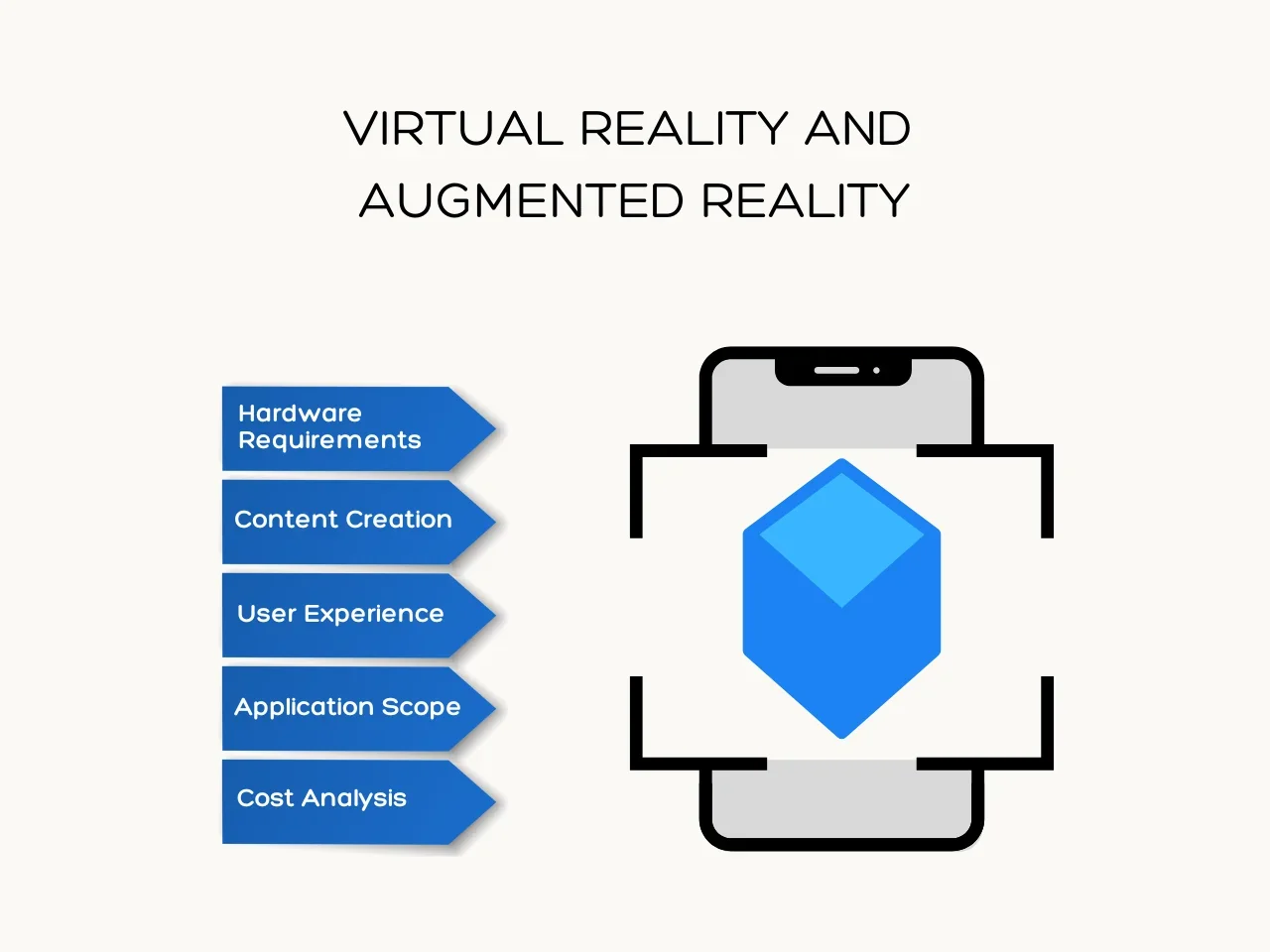
- Hardware Requirements: Assess the hardware needed to support VR and AR experiences, ensuring compatibility with user devices.
- Content Creation: Invest in developing engaging and relevant content tailored to your industry and target audience.
- User Experience: Prioritize user experience design to maximize engagement and usability.
- Application Scope: Define the specific use cases within your industry where VR and AR can add value.
- Cost Analysis: Evaluate the initial investment and ongoing maintenance costs of VR and AR integration.
Incorporating VR and AR into your software solutions, alongside other latest technologies such as Custom ecommerce CMS solutions, can provide a competitive edge in today's dynamic digital landscape. However, a thoughtful approach addressing the above considerations is essential to realize these technologies' benefits fully.
6. Big Data and Data Analytics
Big Data and Data Analytics represent cutting-edge technologies in the software industry. Big Data refers to the massive volumes of structured and unstructured data that organizations accumulate daily. Data Analytics, conversely, involves examining, cleaning, transforming, and interpreting this data to extract valuable insights. These technologies are pivotal in various sectors, including marketing, finance, healthcare, and e-commerce.
Key Considerations for Implementing Big Data and Data Analytics
To effectively implement Big Data and Data Analytics in your software endeavors, consider the following key factors:

- Data Quality: Ensure data accuracy, completeness, and consistency for reliable analytics.
- Scalability: Build systems that can handle growing data volumes without compromising performance.
- Privacy and Compliance: Adhere to data privacy regulations and implement secure data handling practices.
- Data Integration: Integrate data from diverse sources to gain a holistic view.
- Analytics Tools: Select appropriate tools and platforms based on your specific needs.
Integrating Big Data and Data Analytics along with CMS solutions for insurance into your software infrastructure can provide a competitive edge by harnessing the power of data. With the right approach and attention to these considerations, organizations can leverage these technologies to drive informed decision-making and optimize business processes.
7. IoT (Internet of Things)
The Internet of Things (IoT) is among the latest software technologies transforming how devices and objects interact and communicate. IoT refers to the network of physical devices, vehicles, appliances, and other objects embedded with sensors, software, and connectivity, allowing them to collect and exchange data.
This innovation has profoundly impacted various industries, including healthcare, where IoT devices are used for remote monitoring, patient tracking, and improving overall healthcare services. IoT in healthcare enables real-time data collection, enhancing patient care and streamlining processes for healthcare providers. As IoT continues to evolve, it presents numerous opportunities for innovation and efficiency across different sectors.
Key Considerations for Implementing IoT
When integrating IoT in healthcare, several key considerations must be taken into account to ensure its successful implementation:
.webp)
- Data Security: Prioritize robust data encryption and security measures to protect patient information.
- Interoperability: Ensure compatibility and seamless integration of IoT devices with existing healthcare systems.
- Regulatory Compliance: Adhere to healthcare regulations and standards, such as HIPAA, to maintain data privacy and compliance.
- Scalability: Plan for the scalability of IoT infrastructure to accommodate future growth.
- User Training: Train healthcare professionals and staff in using IoT devices effectively and securely.
IoT in healthcare is a groundbreaking technology that promises to enhance patient care and healthcare operations. However, consideration of security, interoperability, and compliance is essential to realize its potential benefits fully.
8. 5G Technology
5G Technology is among the latest technologies in software, heralding a new era of connectivity and communication. It represents the fifth generation of mobile networks and promises blazing-fast internet speeds, low latency, and increased capacity. This transformative technology profoundly impacts various sectors, including healthcare, smart cities, and autonomous vehicles.
With its ability to support massive data transfers and connect many devices simultaneously, 5G facilitates the seamless integration of software applications into the Internet of Things (IoT). As businesses and individuals increasingly rely on data-intensive applications, 5G technology is poised to revolutionize the software landscape, enabling more efficient and innovative solutions.
Key Considerations for Implementing 5G Technology
When considering the integration of 5G technology into software development, several key factors should be taken into account:
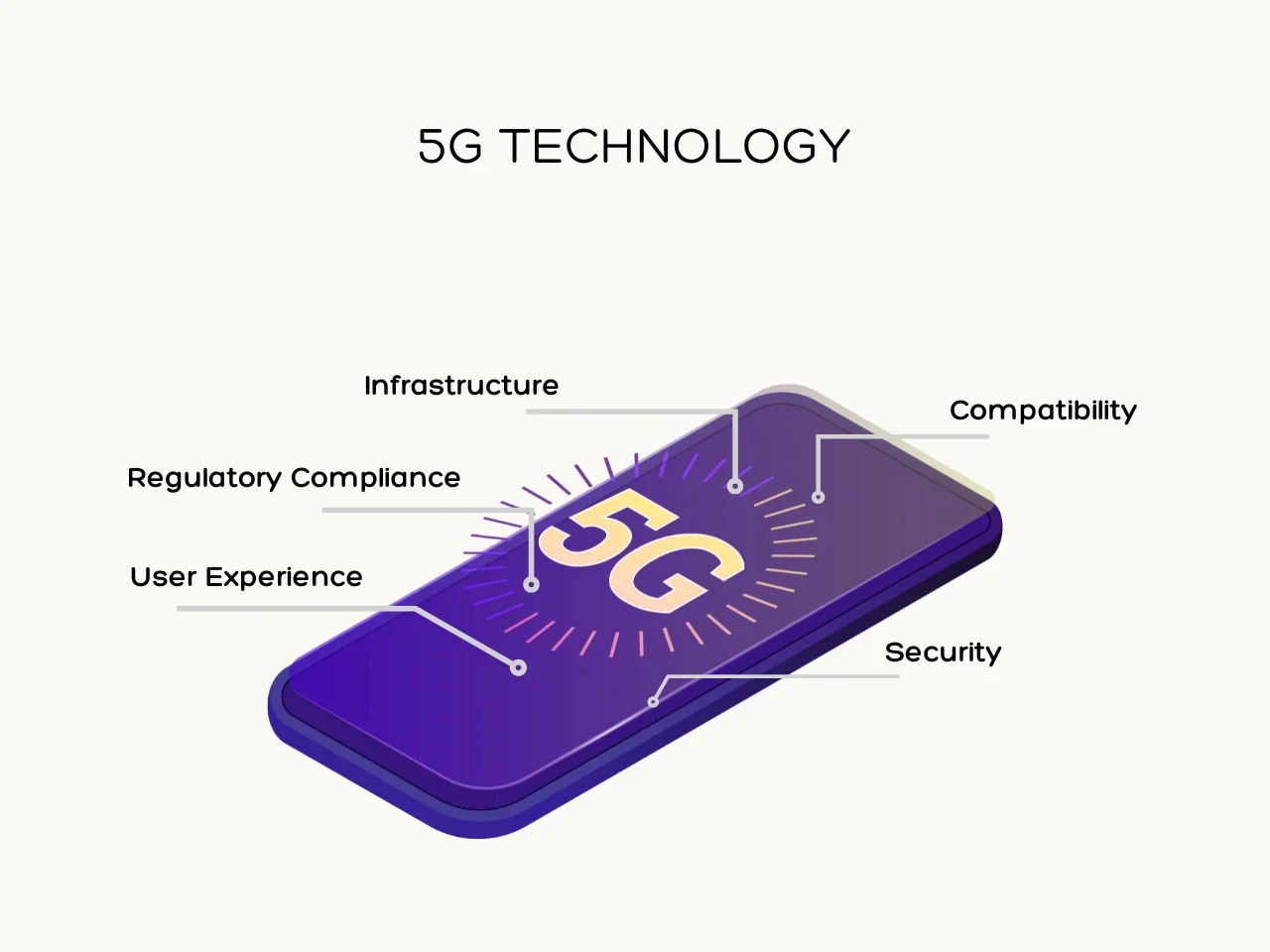
- Infrastructure: Ensure the availability of 5G infrastructure in your target area or market.
- Compatibility: Assess the compatibility of existing software applications with 5G networks.
- Security: Address the cybersecurity challenges associated with increased connectivity and data transfer rates.
- User Experience: Focus on optimizing user experiences by leveraging 5G's speed and low latency.
- Regulatory Compliance: Stay informed about local regulations and spectrum licensing requirements for 5G deployment.
5G technology, along with other latest technologies in software, presents exciting business opportunities. However, a strategic implementation approach is essential to harness this cutting-edge technology's benefits fully.
9. Containerization and Kubernetes
Containerization and Kubernetes represent cutting-edge technologies in software development. Containerization, the process of packaging applications and their dependencies into isolated containers offers a streamlined way to develop, deploy, and manage software. On the other hand, Kubernetes is a powerful orchestration tool that automates the deployment, scaling, and management of containerized applications. Together, they are revolutionizing how software is built and operated.
Key Considerations for Implementing Containerization and Kubernetes
When contemplating the adoption of Containerization and Kubernetes, several key factors should be considered to ensure successful implementation:
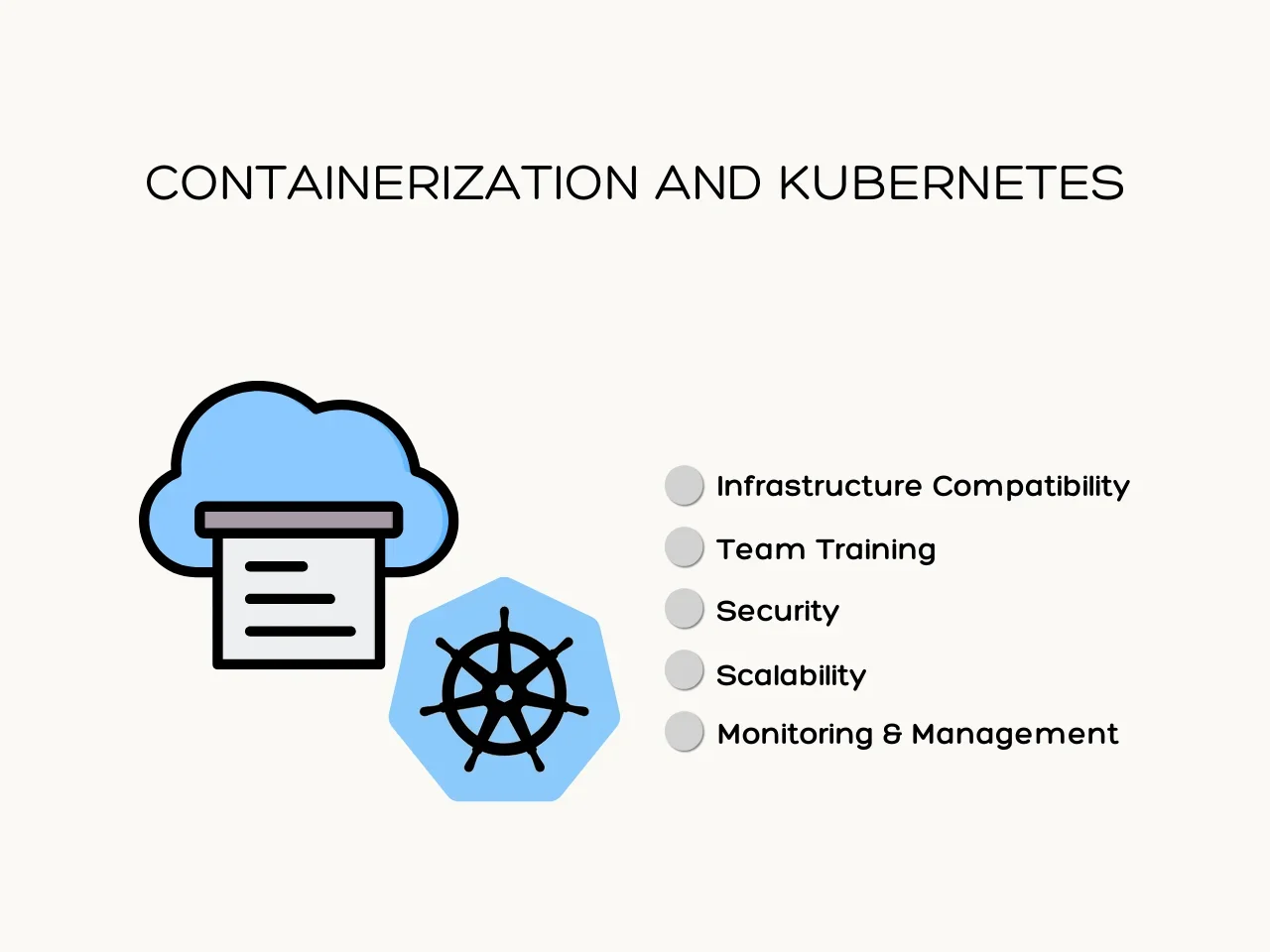
- Infrastructure Compatibility: Assess whether your existing infrastructure supports containerization and Kubernetes or if upgrades are needed.
- Team Training: Invest in training your development and operations teams to use these technologies effectively.
- Security: Implement robust security measures to protect containerized applications and Kubernetes clusters.
- Scalability: Plan for scalability by designing applications that can quickly scale with Kubernetes.
- Monitoring and Management: Choose suitable Kubernetes monitoring tools for containerized workloads.
Containerization and Kubernetes are essential technologies in the modern software landscape, alongside other latest technologies. Their adoption can greatly enhance development and deployment processes, but careful consideration and planning are crucial for success.
10. Progressive Web Apps (PWAs)
Progressive Web Apps (PWAs) are at the forefront of the latest technologies in software, offering a unique approach to web development. PWAs combine the best web and mobile applications, providing users with an app-like experience directly from a web browser. These applications are built with modern web technologies, ensuring they are fast, responsive, and secure. PWAs also have the advantage of being discoverable and accessible through search engines, making them a powerful tool for businesses and developers.
Key Considerations for Implementing PWAs
When considering the implementation of Progressive Web Apps (PWAs) in your software development strategy, it's essential to keep these key factors in mind:
.webp)
- Performance: Prioritize optimization to ensure fast loading times and smooth user experiences.
- Offline Access: Plan for offline functionality, allowing users to access content without an internet connection.
- Cross-Browser Compatibility: Test PWAs on browsers to guarantee a consistent user experience.
- Engagement: Use push notifications and other engagement features to increase user retention.
- Security: Implement security best practices to protect user data and maintain trust.
Progressive Web Apps (PWAs) represent a significant shift in software development, combining the best web and mobile technologies. Embracing PWAs, along with other latest technologies in software, can lead to enhanced user experiences and business growth.
Key Considerations To Take When Applying the Latest Software Tech
As the software development industry evolves rapidly with the latest technologies, businesses, developers, and organizations must consider several key factors when applying these innovations. These considerations are essential to ensure successful implementation and maximize the benefits of the latest technologies in software.
Here, we'll list and explain five crucial factors to keep in mind:
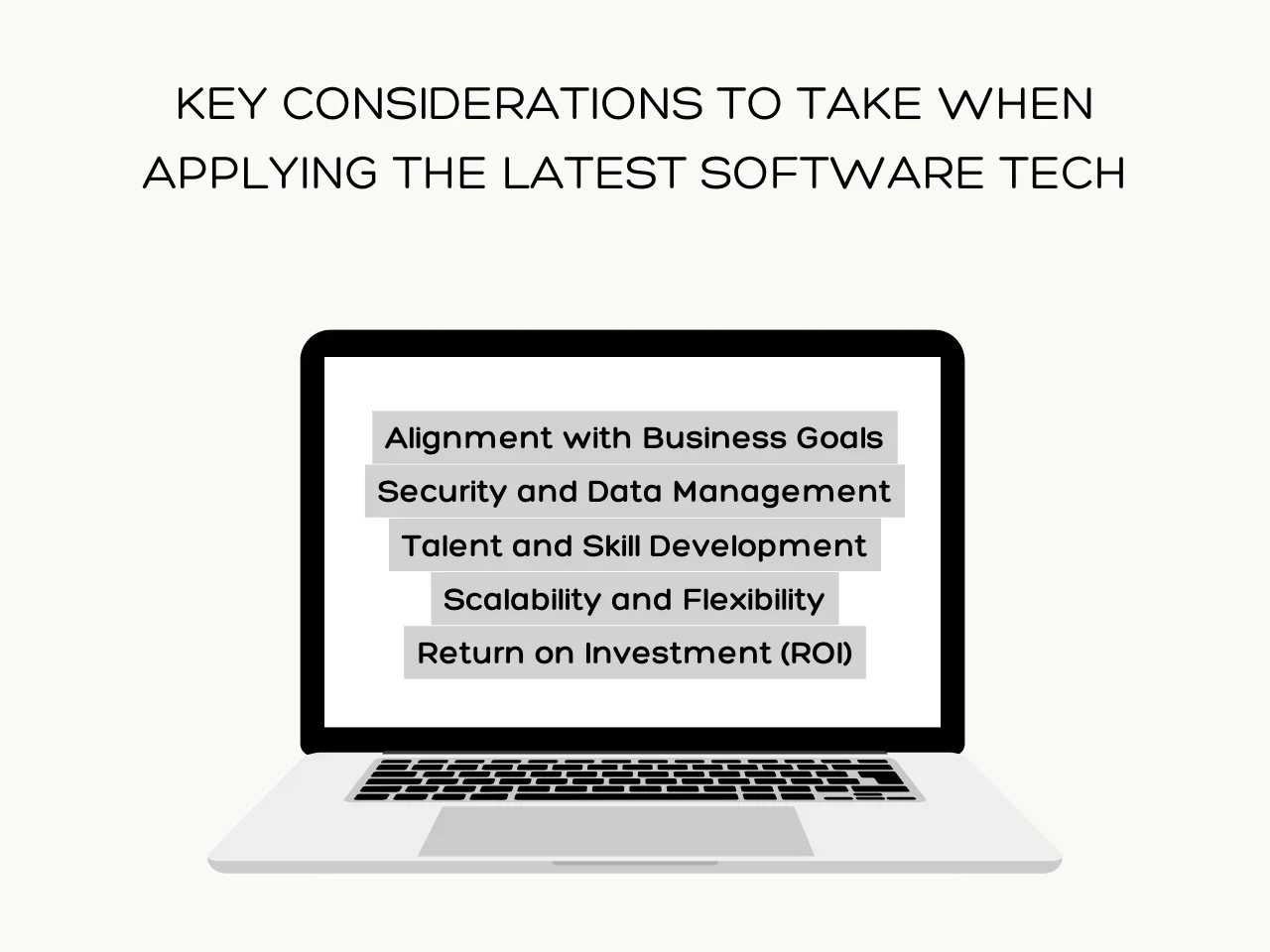
Alignment with Business Goals
Before adopting the latest software technologies, aligning them with your organization's overarching business goals is essential. Evaluate how the new technologies can contribute to achieving these objectives. For example, if your goal is to enhance user experience, consider how web development innovations can improve your software applications. You can make strategic decisions that lead to digital transformation and improved business outcomes by ensuring alignment.
Security and Data Management
Cyber security and data management are paramount in an era of increasing cyber threats. When implementing new technologies, prioritize security measures to protect your software systems and data. Utilize cloud computing and network security solutions to safeguard against potential breaches. Additionally, stay informed about the latest trends in network security and consider technologies like robotic process automation to enhance security protocols.
Talent and Skill Development
The rapid pace of technological advancements requires a skilled workforce. Invest in the training and development of your software developers and engineers to keep up with the latest programming languages and software engineering practices. Just as students often turn to online tools when they need to write my essay efficiently, businesses leverage the latest software technologies to streamline workflows and boost productivity.
Consider offering courses on deep learning, natural language processing, and other trending technologies to ensure your team can effectively implement new technology trends. If you need online resources to further your education on specific topics, you can check out sites like Exam-labs or Microsoft PL-300 Dumps.
Scalability and Flexibility
When adopting the latest software technologies, consider their scalability and flexibility. Ensure that your software solutions can adapt to changing demands and evolving trends. For instance, if you're developing applications for IoT devices, focus on building scalable software that can accommodate the increasing number of connected devices. Scalability is crucial to stay competitive in a dynamic market.
Return on Investment (ROI)
Assess the potential ROI of implementing the latest technologies in software. While staying at the forefront of technological innovation is essential, evaluating the cost-effectiveness and potential returns is equally important. Consider the average salary of software developers and data scientists in your region and weigh these costs against the expected benefits. Implement technologies like predictive analytics to measure the impact on your business intelligence and overall success.
Key Takeaway
Discovering the latest technologies in software is crucial for businesses and development teams. Staying ahead in this dynamic industry ensures a competitive advantage. It's vital to evaluate how these innovations align with specific business requirements. The latest technologies in software can bring transformative benefits, but they must be carefully integrated.
Comprehensive planning and thorough testing before implementation are non-negotiable. Rushing into adoption can lead to costly setbacks. Skilled development teams are the backbone of successful technology integration. They possess the expertise to navigate the intricacies of new tools and systems.
Sign up for Aloa's email list through our blog page to stay at the forefront of software trends. Our updates will strengthen your industry outlook and support your business growth. For further inquiries, contact [email protected]. Being informed and prepared for the latest technologies in software is the key to success.

